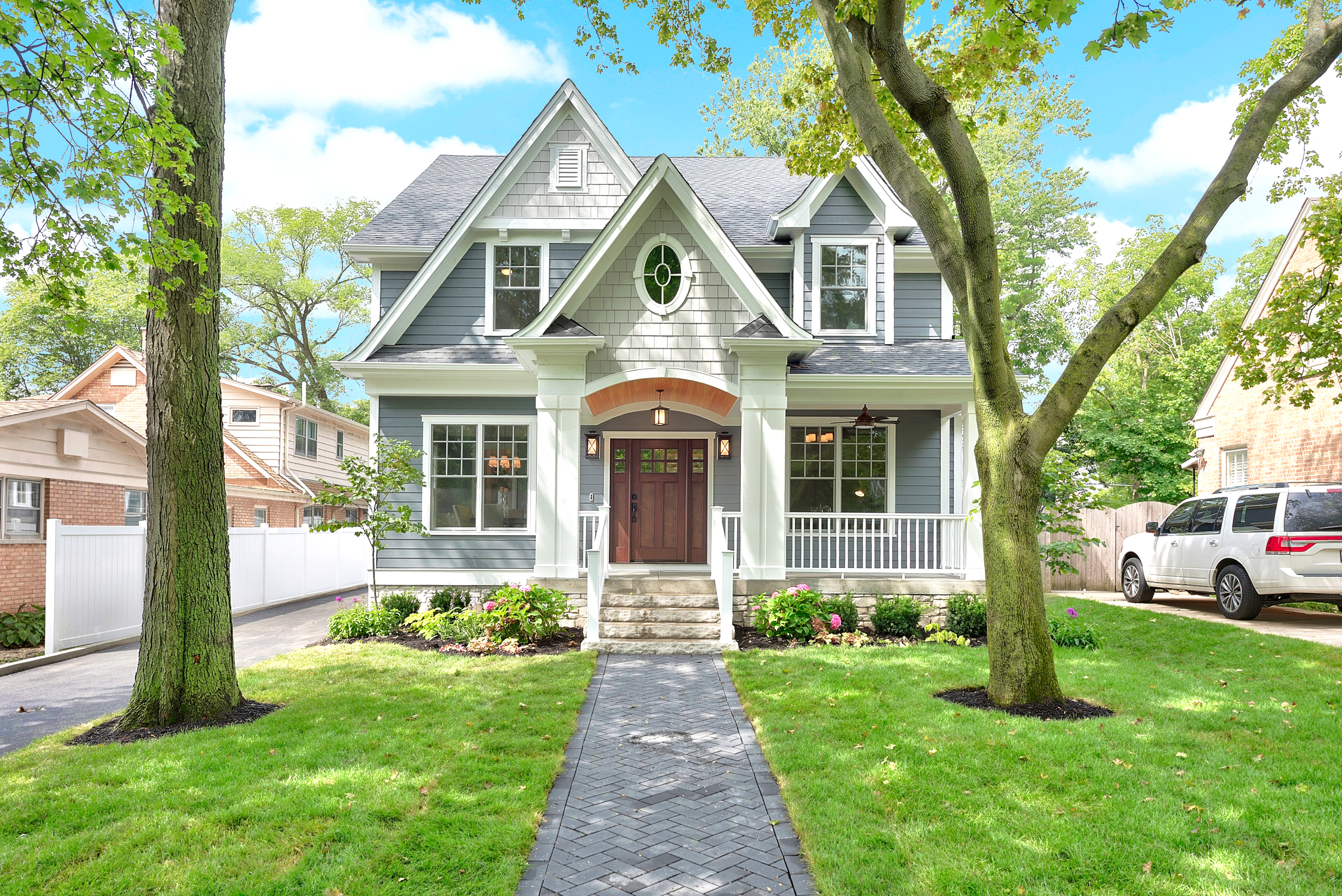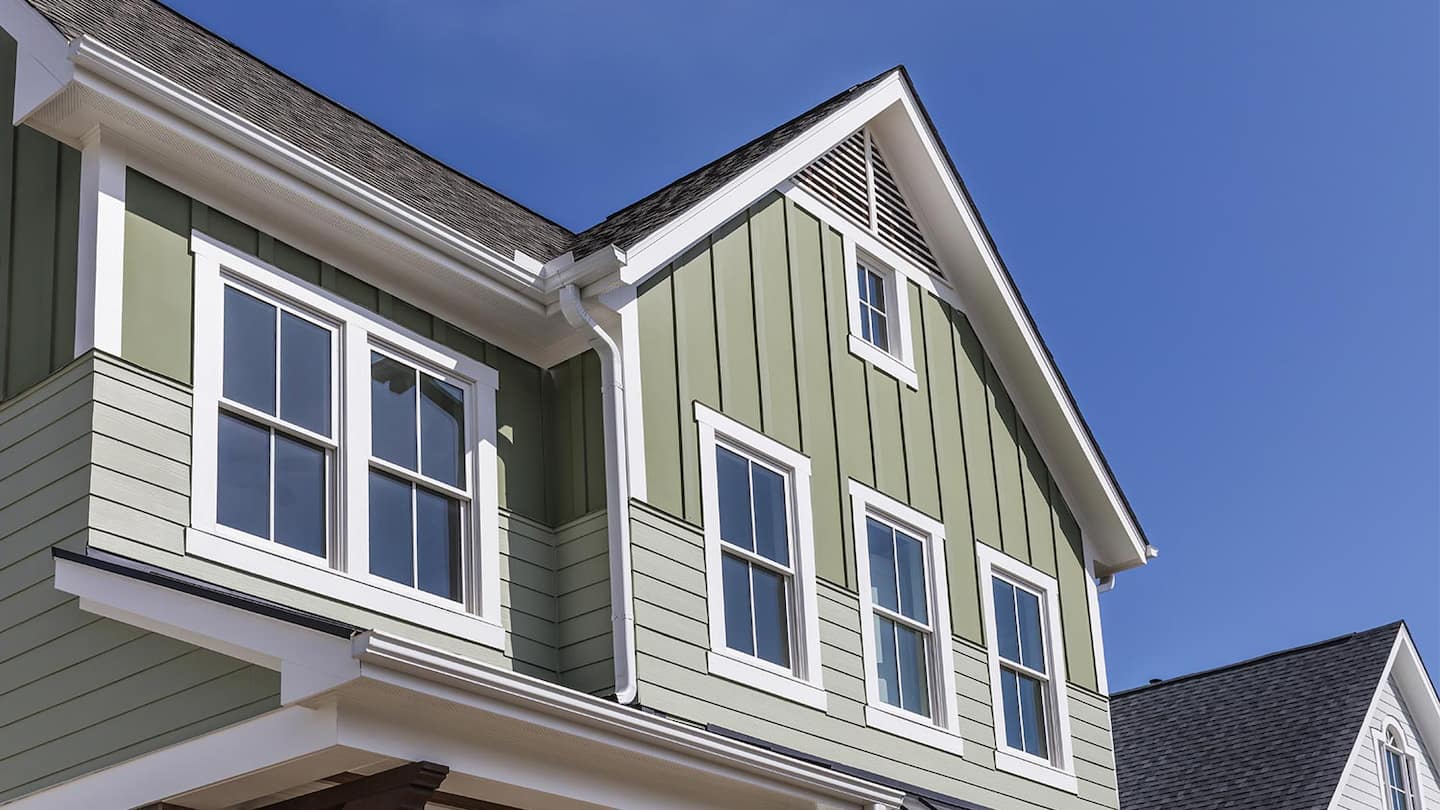
Vinyl siding boosts home value in Chicago with better curb appeal, water protection, and energy efficiency. Explore Chicago vinyl siding installation costs.
Switching up the exterior adds both curb appeal and value to your home


There’s nothing wrong with a monochromatic design for your home’s exterior, but it’s exciting to try mixing siding types. Like clothing, the matchy-matchy look can sometimes turn your siding into a bit of a snooze fest. You can liven up the neighborhood—in a good way—when you mix and match siding for your home’s facade. It just takes a little thoughtfulness and planning to get the combination just right.

There are a few things to consider when mixing siding types to create a unique exterior home design that maximizes curb appeal and doesn’t seem too busy.
When you combine different types of siding, you add texture and intrigue to your home. Depending on the materials and colors you choose, mixed siding can look good even on homes with more traditional architecture.
For example, you could choose gray vinyl siding for the majority of the house and install a light-colored stone veneer on key focal points of the exterior, like the entryway. You can also try experimenting with different siding materials and textures on second-story bump-outs or additions. Couple cedar shake siding with clapboard vinyl for a traditional look.
Mixing materials for the exterior is not only easier on the eyes, but it can be easier on your wallet. For example, doing the entire home in brick will set you back quite a bit, but using the brick as an accent to vinyl or wood siding is far more cost-effective. Consult a local siding contractor to determine whether this mixing style is the right fit for your project and budget.
Another way to mix up siding is to vary the direction of the slats. For example, you might have the vinyl siding installed horizontally on broad portions of the house, but you can turn the slats vertically for the surface of any dormers or gables. Even though you’re using the same color material throughout, the different directions will allow for a textured look that is very attractive and cohesive.
When it comes to choosing vinyl siding colors, neutral colors are always a good choice for home exteriors, particularly if you are thinking of selling your home in the near future. Dark or bright colors can be a turnoff for some home buyers, which means a smaller buyer pool and the potential for a lower selling price.
If you like color, you can always add it by way of your landscaping with vibrant flowers and shrubs. It’s better to experiment with bolder color trends indoors, like painting an accent wall in your living room.
There’s more good news: some siding options provide a higher resale value but are expensive to install. Mixing siding types lets you get the best of both worlds. Consider adding sections of stone veneer, stone, brick, brick veneer, and fiber cement, all of which provide an above-average return on investment (ROI) of 80% or more.
Keep in mind that you want your home to stand out—just not like a sore thumb. Take your neighbors’ homes into consideration when choosing colors and materials, as you don’t want to choose siding that will clash too much with theirs. Unless you have a strict HOA that limits your home improvement projects, you don’t need to completely match the other homes on your block in color or style, but taking them into consideration is wise.
Choosing colors and materials for the exterior of your home is a big decision. If you choose the wrong combination, it could turn out to be a big mistake, not to mention an expensive one. There’s good news for indecisive homeowners: many contractors use software to create digital renderings of your home’s exterior so you can test out a variety of color and texture combos and different types of cladding and siding before making a final decision.
When it comes to pairing different siding materials, think about texture first. Some materials, like stone, will offer more depth and shape, while others, like vinyl and fiber cement, create a sleek, elongated look. Combining two contrasting materials can give your home visual intrigue and allow you to highlight certain parts of the architecture.
Stucco is a timeless, sought-after option, as is the look of stone—when used together, you can have a simpler material paired with something more textural and striking. If you already have stucco siding, you can put new siding over the stucco for an easy facelift for your home.
Both brick and wood are made from organic materials, but have totally different textures and colors that complement each other. Try brick in the central sections of your home paired with horizontal wood lap siding on the sides, or use brick on the first floor and wood on the second-story bump-outs to make them pop.
For a contemporary look, pair the wide panels of fiber cement with the industrial look of metal siding. The metal adds some flair, while the fiber cement will create a sense of depth with its long lines.
Another option that feels very modern is the organic texture of wood that complements shiny, industrial metal well. Consider wood siding on the main walls with metal installed on the side, on the second story, or just on awnings for a pop of contrast.
Our cedar siding needed repairs, and Glenn's team did a fantastic job restoring it to its original beauty. Highly recommend their services.
I ended up booking a last minute move from the suburbs to downtown Chicago. They were pleasant to work with and the movers were highly efficient and courteous during the move. Only negative would be that it was extremely pricey for a 3 hour move. Kudos to them because they initially had my...
This painter was recommended by my contractor as we were remodeling. All of the interior walls and doors were repainted, though not the ceiling. Drywall needed repair in several areas. In several instances, dark saturated colors needed to be colored. Adrian's team was very professional. They...
DO NOT HIRE THESE PAINTERS, IT'S NOT WORTH THE FRUSTRATION AND HEADACHE! The proposal received from one of the painters apparently was priced too low according to the owner, so although they honored the original price, the owner was trying to make it up by up-charging every add-on. Their...
Good good I think were quiet good they didn't want to listen to me about, they moved my stuff into storage two of them just wouldn't listen to me they had to have large moving room carpet rug and you never roll big rugs like that pile sided so I wasn't happy about that but other than that I...
We have used them several times, and it is a great company. It is very small, and the owner who does the job at our place is so accommodating, he does such a good job, and explains what he does. We have been very pleased. He sends reminder emails, and we have used him around 3 times now. We...
DO NOT USE THIS MOVER!!! Horrible! The Florida end of this move was atrocious...and that's where the company is located. I used United out of Chicago when I moved from Champaign to Florida several years ago and all went well. What was damaged was covered by insurance- no issues. The packers...
Two men arived to do the windows. They removed their shoes to come in the house. They were very professional and obviously knew what they were doing. 42 windows in 2 hours! I couldn't believe it! Windows were clean and without streaks. When they were gone you would never have known they...
Weather did not work with us but as soon as conditions permitted he was out to make repairs. Since this is old aluminum siding it was important to preserve what we had. All went well and has a full guarantee.
THE WORKMAN ARRIVED 90 MINUTES LATE. THE WORKMAN ALSO REFUSED TO REMOVE THE DISCARDED TILE OR INSTALL THE BATH HARDWARE. WITHOUT MY AUTHORIZATION, THE COMPANY CHARGED MY AMX CARD FOR THE FULL AMOUNT OF THE BOTCHED JOB. WHEN I PROTESTED THE CHARGE TO AMX, THE COMPANY FABRICATED AN AGREED...
From average costs to expert advice, get all the answers you need to get your job done.

Vinyl siding boosts home value in Chicago with better curb appeal, water protection, and energy efficiency. Explore Chicago vinyl siding installation costs.

Insulated vinyl siding costs are about double traditional vinyl siding—but the energy savings are more than worth the investment. Learn more in our guide.

New siding improves curb appeal, increases home value, and insulates your home. Learn about fiber cement siding installation costs in Chicago.

Are you wondering what clapboard siding looks like? This explanation of clapboard siding will help you discover when to use clapboard siding, clapboard siding pros and cons, costs, and styles.

Wondering why your vinyl siding is wavy? Chances are the installation is to blame. But the issue could be sunlight, heat, or foundation issues.

Learn how to identify and repair wind-damaged shingles—protect your home by addressing roof damage promptly to prevent further issues.